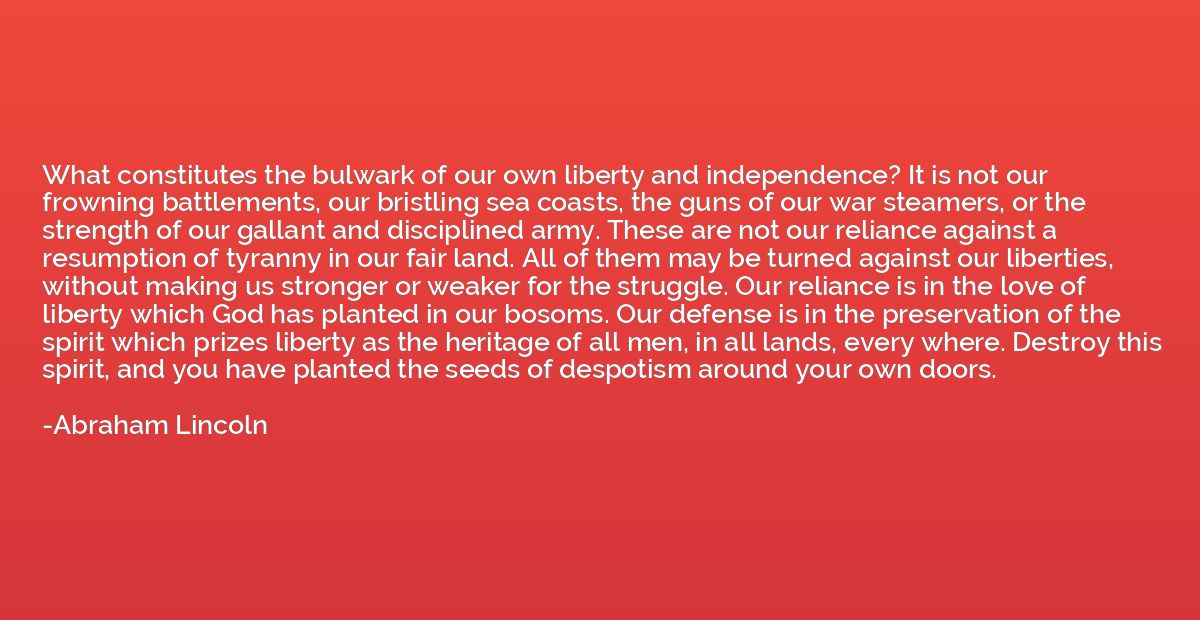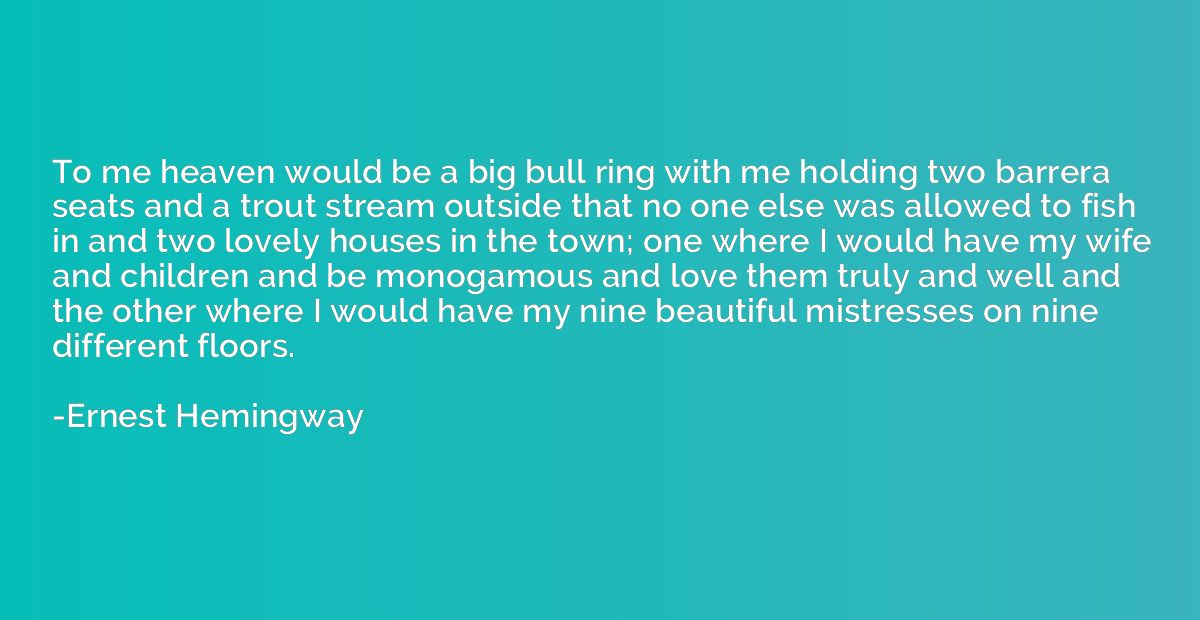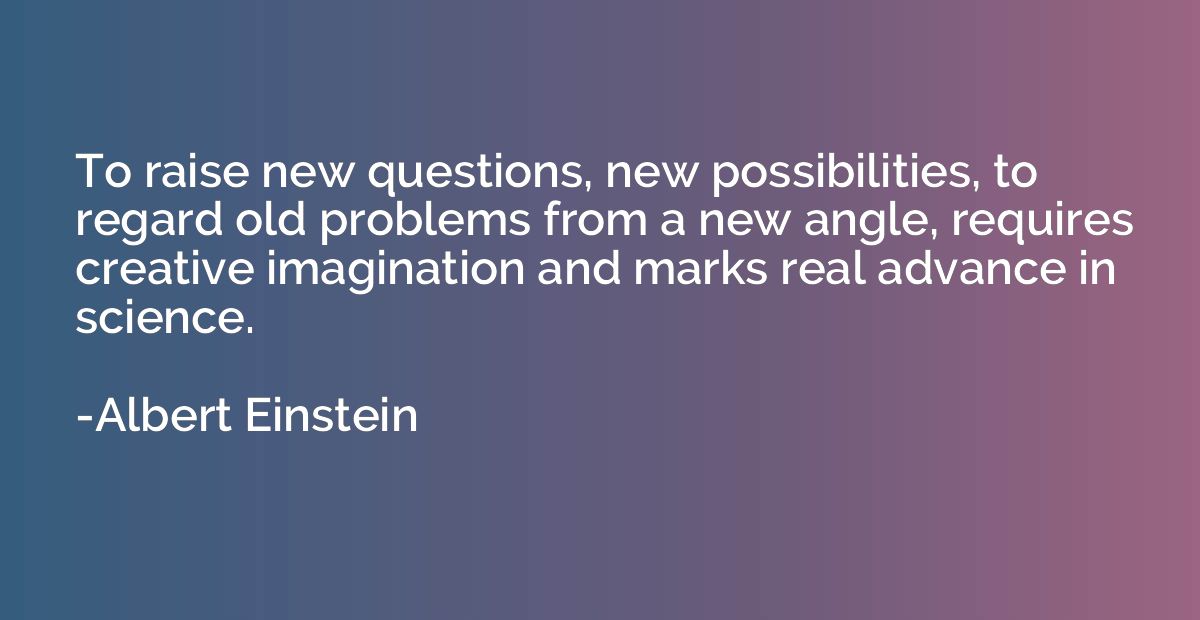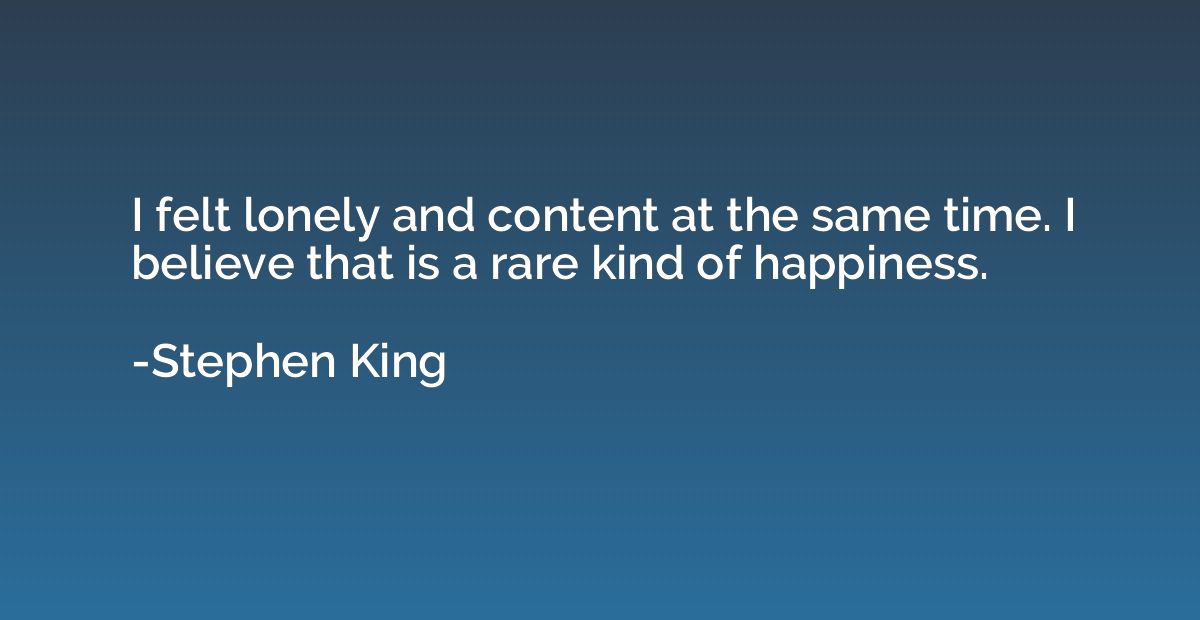Quote by Abraham Lincoln
What constitutes the bulwark of our own liberty and independence? It is not our frowning battlements, our bristling sea coasts, the guns of our war steamers, or the strength of our gallant and disciplined army. These are not our reliance against a resumption of tyranny in our fair land. All of them may be turned against our liberties, without making us stronger or weaker for the struggle. Our reliance is in the love of liberty which God has planted in our bosoms. Our defense is in the preservation of the spirit which prizes liberty as the heritage of all men, in all lands, every where. Destroy this spirit, and you have planted the seeds of despotism around your own doors.

Summary
This quote suggests that what truly safeguards our liberty and independence is not physical fortifications or military strength, but rather the inherent love of freedom that exists within us. The quote suggests that no matter how strong our battlements or armies may be, they can be used against us if the spirit of liberty is not upheld. The preservation of this spirit, which values freedom as a universal inheritance, is what truly protects us from the rise of tyranny. Therefore, the quote warns against losing this spirit, as it can lead to the growth of authoritarianism.














